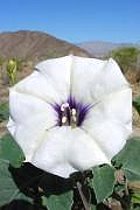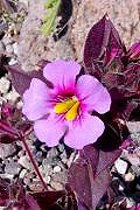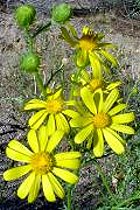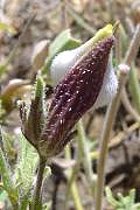-
li'ber: from Latin liber, "free, independent, unrestricted, unchecked." Jaeger's Source-book says for liber, "the inner bark of a tree," and for libero, "to set free." Also gives another meaning for liber, "a child."
Wiktionary says "free, independent, unrestricted, unchecked, unrestrained, licentious." The only taxon in California that I am aware of is Streptanthus polygaloides ssp. liber, a listing of which species in Phytoneuron 2023-22: 7 (2023) says "name alludes to the unfused filaments of the adaxial stamens."
-
Liber'tia: named for Marie-Anne Libert (1782-1865), a Belgian botanist and mycologist and one of the first women
 |
|
plant pathologists. She was born in Malmedy, province of Liège, twlfth of thirteen children. The following is quoted from Wikipedia: “The parents, educated members of the middle class who ran a tanning business, recognised her intellectual potential. She was initially a pupil of the Sépulcrines of Malmedy. At the age of eleven her parents sent her to stay in Prüm in Germany to learn German and the violin, both of which she quickly mastered. Her father recognised his daughter's emerging interest in the exact sciences and taught her algebra and geometry, so that she could follow him |
into the business. She was enthusiastic and pushed the education well beyond the needs of commerce. At an age when other girls only wanted to amuse themselves, Marie-Anne Libert was motivated by a thirst for knowledge: everything interested her, she wanted to know everything. Nature drew her in particular; she spent long hours walking in the area of Malmedy, particularly in the High Fens. She observed, gathered many minerals and plants then identified them in her father's office, cataloguing and classifying them. As most reference works were written in Latin, she began to teach herself Latin. Her work in botany, or more precisely in cryptogams, of an undeniable scientific rigor, earned her an international reputation. She corresponded with scientists in Belgium and elsewhere. She also collaborated for a time with Dr. Lejeune of Verviers, who was preparing a catalogue of the plants of the Department of Ourthe. Lejeune introduced Libert to the Swiss botanist Augustin Pyramis de Candolle, who encouraged her to work on cryptogamic flora. Libert's later produced a cryptogamic flora of the Ardennes. She was one of the first to identify the organism responsible for the 'late blight' disease of the potato, which she named Botrytis vastatrix and of which she gave a detailed description in a report written in August 1845. The German mycologist Anton de Bary built on this discovery, among other work, when he showed in 1876 that the oomycete, Phytophthora infestans as he renamed it, was the cause of late blight, and not the consequence as was still believed at the time. In total, she described over 200 new taxa. The study of ancient languages had directed her attention towards archaeology. In the last years of her life, when her age no longer allowed her to move around the countryside easily, she devoted considerable time to the history of the Principality of Stavelot-Malmedy. She gave to history and archeology the same scientific rigor as to her botanical studies, using all available sources. In addition to her herbarium, she formed a remarkable collection of pearls obtained from large pearl mussels found in abundance in the river Amblève and its tributaries. She also assembled a large collection of coins. This intense scientific activity was no obstacle to her involvement in the family business. She had the same determination as in her research, the same desire to do well. With her brothers, she was able to make a large extension to the small tannery which they had inherited from their parents. In 1820 she became as associate member of the Société Linnéenne de Paris (Linnean Society of Paris), and Emperor Friedrich-Wilhelm III awarded her a gold medal of merit. She was the first woman invited to join the Société Royale de Botanique de Belgique in 1862. After a short illness, Marie-Anne Libert died in Malmedy on 14 January 1865." The genus Libertia was published by Curt Polycarp Joachim Sprengel in 1825.
-
liberti'ni: named for Freedom William Hoffman (1880-1959), an amateur botanist interested in plants of serpentine areas in northern California, especially Streptanthus. He was born in California, had seven siblings, and married Jemella Gertrude Peugh on 24 August, 1907, in Guerneville, Sonoma, California. Libertinus
is Latin for freedman (a freed slave).
-
liboced'ri: from the Greek libos,
"tear, drop," and cedrus, "cedar," and
referring to the host plant this species parasitizes, which at one
time was in the genus Libocedrus.
-
Lidbeck'ia: named for Erik Gustaf Lidbeck (1742-1803), a Swedish botanist and disciple of Carl Linnaeus. He was
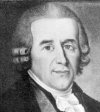 |
|
born in Edsleskog's parish, Älvsborg County, and enrolled at Uppsala University in 1741. Linnaeus recognized something in him and took him as secretary on his West Göteer trip in 1746. In 1748 Linnaeus helped him gain a post as an associate professor in economics and natural history. The following year he was promoted to master of philosophy. In 1750, again with Linnaeus’ support, he was appointed as an assistant professor of medicine at Lund University and he remained there for the rest of his academic career, teaching botany, natural history and mineralogy. He also was |
the director of the University’s botanical garden. In 1755 Lidbeck became a member of the Royal Swedish Academy of Sciences, and in 1756 became professor of natural history and director of the plantations in Skåne, where the University of Lund is located. In 1795 he took a leave of absence, occupying himself as plantation director concerned with the introduction of useful plants in Skåne. The genus Lidbeckia was published by Peter Jonas Bergius in 1767.
-
liddon'ii: named for Matthew Liddon of Axminster (1792-1869), a naval explorer. He joined the Royal Navy in 1804 at the age of 12 and was captured by French privateers in the West Indies. After being released, he returned to England and joined the crew of HMS Pheasant in 1806 for an expedition to the Rio de la Plata, following which he served on a succession of different ships off the coasts of North America and Britain and in the Mediterranean. He was promoted to Lieutenant in 1811. In 1819 he took command of HMS Griper on the British Naval Northwest Passage Expedition, under the command of William Edward Parry, sailing in company with HMS Hecla to the Canadian Arctic to seek a passage through Lancaster Sound. Wikipedia says “Setting out from London in May 1819, the expedition reached Davis Strait before proceeding to Lancaster Sound where the two vessels continued westward, exploring Prince Regent Inlet before progressing along Barrow Strait. On September 6, 1819, Parry crossed the meridian of 110° West, off the south shore of Melville Island, earning a prize of £5,000 that had been offered by Parliament for reaching this longitude. Prevented from progressing still further west by ice conditions, the expedition wintered at Winter Harbour on Melville Island, where the vessels remained until August 1, 1820. After the expedition, Liddon was paid off in December, 1820. He did did not serve at sea again, advancing to the rank of Commander in 1821 and retiring as Captain in 1856. He died on August 31, 1869 in Clifton, Bristol. An island in Fury and Hecla Straight, under the northwest portion of Baffin Island, is named for him.”
-
Lid'ia: named for Norwegian botanist and writer Johannes Lid (1886-1971). He was born in Voss, and was educated
 |
|
at the University of Oslo. In 1936 he married the talented painter, illustrator and poet Dagny Tande Lid who was well known for her drawings of plants and botanical illustrations for Norwegian postage stamps. Johannes is particularly known for his works on Scandinavian flora, and for his widely used handbook to plants Norsk flora, with illustrations by his wife. He began working at the botanical museum of the University of Oslo in 1919, and co-founded and chaired the Norwegian Botanical Association from 1935 to 1942. From 1948 onward he served as head curator at the botanical museum. In 1954 he joined a major Norwegian scientific expedition to the Canary |
Islands, and he returned to this archipelago several times in later years. In 1967 his great work on the vascular flora of these islands was issued, beautifully illustrated by his wife. The alpine vascular flora of Norway and the Arctic was his chief interest, although he also worked with mosses, especially the genus Sphagnum. His many scientific papers deal with various aspects of Norwegian and Arctic ecology, plant geography, bryology and floristics. Among his most important contributions were his fundamental work on the vegetation of the Norwegian mountain plateau Hardangervidda, and his flora of Jan Mayen, an uninhabited island in the Greenland Sea. He became a fellow of the Norwegian Academy of Science and Letters in 1945 and received the King's Medal of Merit in gold in 1956 which was the year that he retired. He died in Oslo at the end of a long and active career. The genus Lidia was published by Áskell Löve and Doris Benta Maria Löve in 1975.
-
liebmann'ii: named for Frederik Michael Liebmann (1813-1856), a Danish botanist. He was born in Helsingör and
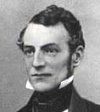 |
|
studied botany at the University of Copenhagen, although he did not receive a formal qualification. His early interest was mostly in algae, which he studied in Denmark and neighbouring countries in the 1830s. In 1837 he was employed as an instructor in botany at the Danish Royal Veterinary School in Copenhagen and in 1841 traveled to Mexico to collect plants for the Copenhagen Botanical Garden. He He spent two years exploring the country and spent time on St. Croix and Puerto Rico and also on Cuba before returning to Denmark in 1843. In 1845 he was appointed |
professor of botany at the University of Copenhagen, he was editor of Flora Danica 1845-1852, and director of the university’s botanical garden from 1852 to the year of his death at the age of 43. Based on his work in Mexico he completed an enumeration of the ferns of that country, Mexicos Bregner, in 1849, but died in Copenhagen before he could go further with the rest of his collections. A Mexican snake was also named for him.
-
ligno'sus: woody, from Latin lignum, "firewood," and later "wood tissue.)
-
ligular'is: same as ligulatus.
-
ligula'tum/ligula'tus: straplike, provided with ligules.
-
ligulifo'lia: with straplike leaves.
-
ligusticifo'lia: from the Latin meaning
"with leaves like those of Ligusticum (Lovage)."
-
Ligust'icum: from the Greek ligustikos, "Ligurian, pertaining
to Liguria, Italy." The genus Ligusticum was published in 1753 by Carl Linnaeus.
-
Ligus'trum: a Latin name for the privet plant. The genus Ligustrum was published by Carl Linnaeus in 1753.
-
Lil'aea: named for the French botanist and physician Alire Raffeneau-Delile (1778-1850), who accompanied Napo-
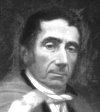 |
|
leon to Egypt, was a traveller in North Carolina, and from 1819 to 1850 was a professor of botany at Montpellier. He was born in Versailles and attended the Ecole de Santé de Paris before entering the Paris medical school at the age of 18. His father had been a member of the Egyptian Society and the son inherited this interest, traveling for the first time to Egypt in 1798 and collecting plants along the Nile Valley, on the coast of the Red Sea and in the desert. For a short while he directed the botanical garden in Cairo and studied ancient Egyptian agricultural practices. Shortly after |
returning to France he was appointed as vice-consul at Wilmington in North Carolina and served as a commissioner in commerce before moving to New York in 1806 where he studied medicine and obtained a medical degree in 1807. He made extensive collections of plants in New York, Pennsylvania and North Carolina that could be cultivated in France. After returning to France he gained a doctorate from the University of Paris in 1809. In 1813 he published Flore d'Égypte and two years later a work on the grasses of North Carolina. In 1819 he was named a professor of botany and materia medica at the medical faculty of Montpellier in 1819 . Further publications followed including Centurie des plantes de l'Amérique du Nord (1820), Description de l'Égypte (1824), and Centurie des plantes d'Afrique (1827). At some point he was named as the director of the botanical garden in Montpellier. His collection of some 30,000 specimens is now housed at the herbarium of the University of Montpellier, where Delile remained until his death. The genus Lilaea was published by Aimé Jacques Alexandre Bonpland in 1808. (Photo credit: American Iris Society)
-
Lilaeop'sis: similar to genus Lilaea of the Liliaceae. The genus Lilaeopsis was published by Edward Greene in 1891.
-
lilia'cea/lilia'ceus: lily-like.
-
lilaci'na: lilac in color.
-
Liliorhi'za: presumably from the roots lili-, to do with lilies, and -rhiza, "a root." Liliorhiza is a subgenus of Fritillaria. Their resemblance to the bulbs of Lilium lends this subgenus the name of Liliorhiza, or lily-roots. The epithet Liliorhiza piattiana published in 1885 by Albert Kellogg is a synonym of Fritillaria pluriflora.
-
Lil'ium: derived from the Greek lirion,
"a lily." The genus Lilium was published by Carl Linnaeus in 1753.
-
limitan'ea: that which is on the border, or "at the limit."
-
Limnan'thes: from the Greek limne,
"a marsh," and anthos, "a flower," because
of its habitat. The genus Limnanthes was published by Robert Brown in 1833.
-
Limno'bium: from the Greek limne, "salt marsh, marsh,"
and bios, "life." Common names for this aquatic taxon are spongeplant and American frogbit. The genus Limnobium was published by Louis Claude Marie Richard in 1814.
-
limno'phila: swamp-loving.
-
Limo'nium: comes from the ancient Greek name Leimonion for sea-lavender, from leimon, "a meadow or pasture,"
referring to frequent occurrence of some species on salt meadows. Other sources say that it derives from the Greek limne meaning "a marsh" or "plants growing in a salt marsh." The genus Limonium was published by Philip Miller in 1754.
-
limo'sa: pertaining to or of marshy or muddy places.
-
Limosel'la: from the Latin limus, "mud," and sella,
"seat," because of its habit of growing in wet places. The genus Limosella was published by Carl Linnaeus in 1753.
-
Limpricht'ia/limpricht'ii: named for Karl Gustav Limpricht (1834-1902), a German schoolteacher and bryologist. He taught classes from 1856 to 1858 in the community of Obergläsersdorf followed by several years as an instructor at the Mädchen gymnasium in Bunzlau. From 1869 onward, he was a teacher at the Evangelical high school in Breslau. In 1895 he attained the position of Oberlehrer, senior or head teacher. Wikipedia says: “He was the author of a major work on mosses native to Germany, Austria and Switzerland, titled Die Laubmoose Deutschlands, Oesterreichs und der Schweiz (3 volumes, 1885-1903). It was included in Rabenhorst's Kryptogamenflora von Deutschland, Oesterreich und der Schweiz. His treatise on mosses and liverworts, Laub- und lebermoose (1876), was published in Ferdinand Cohn's Kryptogamen-flora von Schlesien (Cryptogamic flora of Silesia). His son, Hans Wolfgang Limpricht (born 1877), was a botanical collector in China.” The genus Limprichtia was published by Leopold Loeske in 1907.
-
Linan'thus: from the Greek lin meaning
"flax" and anthos meaning "flower." The genus Linanthus was published by George Bentham in 1833.
-
Linar'ia: from the Latin lin, "flax,"
referring to the flax-like leaves of some species. The genus Linaria was published by Philip Miller in 1754.
-
linariifo'lia: with leaves like those
of genus Linaria.
-
lincecum'ii: named for Gideon Lincecum (1793-1874), American pioneer, historian, philosopher, physician, musi-
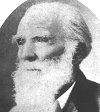 |
|
cian, botanist, entomologist, ornithologist, and translator of Indian dialects known for his exploration and settlement of what are now the US states of Alabama, Mississippi and Texas, which were then beyond the western borders of the thirteen colonies. He was born in Hancock, Georgia, and was self-educated. He spent much of his early youth in the company of Muskogee indians. He married Sarah Sally Bryan and had 13 children. He moved with his wife, parents and siblings to the Tombigbee River area of Mississippi in 1818. He was intensely interested in all |
things natural, birds, insects, weather, rocks, and plants. In Mississippi he spent a great deal of time with the Choctaw indians, learning about their culture and recording their legends and traditions in their native language. He corresponded with like-minded individuals, including Charles Darwin on two occasions and published numerous articles in scholarly scientific journals, coming to be recognized as a thorough and respectable researcher, in spite of his lack of formal education. During his time in Mississippi he cut and sold lumber, hunted, traded merchandise with Choctaw and Chickasaw indians. He served as chief justice of the “Quorum,” a group of people appointed by the Mississippi legislature to organize Monroe County, was chairman of the school commissioners, and superintendent of the new male and female academies in Monroe County. He dabbled in medicine before becoming a full-time doctor in 1830. He moved to Texas in 1848 and bought more than 1,800 acres of land in an area he had visited thirteen years before. In Texas Lincecum continued to practice medicine, made geological explorations, assembled a plant collection including 500 species with medicinal properties, kept a meteorological journal that charted drought cycles, observed and recorded the daily activities of insect life, and contributed valuable collections to the Philadelphia Academy of Science and the Smithsonian Institution. Although an amateur, he was elected a corresponding member of the Philadelphia Academy, and his writings appeared in the American Naturalist, the American Sportsman, the Proceedings of the Academy of Natural Sciences, the Texas Almanac, and the Journal of the Linnaean Society in London. In 1868, at the age of 76, he was drawn to a new frontier and with his widowed daughter and her seven children joined a Confederate colony in Tuxpan, Vera Cruz, Mexico, where he spent 5 years working a banana plantation, exploring indian ruins, and continuing his natural history collection and correspondence. He returned to Texas in 1873 to spend his remaining time composing an autobiography in a series of letters printed in the American Sportsman. He died at home in 1874.
-
lincolnen'sis: named for Lincoln County, Nevada.
-
lindberg'ii: named for Sextus Otto Lindberg (1835-1899), Swedish physician, botanist and bryologist. He was born in Stockholm and educated in Uppsala. He worked in the Grand Duchy of Finland, then part of the Russian Empire. He became professor of botany, and dean of the physics-mathematics faculty, at the University of Helsingfors (Helsinki). One of his sons was Harald Lindberg (1871-1963), taxonomist and entomologist, author of Enumeratio plantarum in Fennoscandia orientali sponte et sunsponte nascentium and many other publications, and an authority on Mediterranean plants who described 150 new species and worked at the Botanical Museum in Helsinki. Another son was a famous pomologist Björn Lindberg (1860-1954). Sextus Otto Lindberg died in Helsingfors, Finland. The genus Lindbergia in the Leskeaceae was published in his honor by Nils Conrad Kindberg in 1897.
-
Lindern'ia: named for German botanist Franz Balthazar von Lindern (1682-1755). He was born in Bouxwiller in
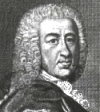 |
|
France, one of eight children of a pharmacist. He attended high school there and then studied in Strasbourg, Halle, Leipzig, Wittenberg, Erfurt and Jena. He wrote a thesis for his doctorate in 1708, and two years later a work on bone disease. Returning to Strasbourg, he taught botany, chemistry and pharmacology. His book on venereal diseases, Speculum veneris noviter politum, was first published in 1728 and further editions were published in subsequent years. It was this book that established his reputation which was further enhanced by his publication in 1739 and 1741 of the |
two-volume work Medicinal passe-partout (Master key of all and every disease of the human body). He did not write these books in Latin but in his native German and thus were readily available to a larger audience. While working and writing as a physician, he was also an avid botanist, exploring the flora of Alsace and being appointed as director of the botanical garden of Strasbourg. In 1728 he also published a flora of Alsace entitled Tournefortius Alsaticus and followed that up with Hortus Alsaticus, plantas in Alsatia nobili in 1747. He died in Strasbourg. The genus Lindernia was published in 1766 by Carlo Allioni.
-
lindheim'eri/lindheimeria'na: named for Ferdinand Jakob Lindheimer (1801-1879), German-American botanist. The
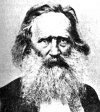 |
|
following
is quoted from the Handbook
of Texas Online: "Ferdinand Jacob Lindheimer, naturalist
and newspaper editor, was born on May 21, 1801, in Frankfurt am Main,
Germany, the youngest son of Johann Hartmann and Jahnette Magdeline
(Reisser) Lindheimer. His father was an affluent merchant. Lindheimer
is often called the father of Texas botany because of his work as
the first permanent resident plant collector in Texas. He received
his education at the Frankfurt Gymnasium and attended a preparatory
school in Berlin. He attended the University of Wiesbaden, the Univer- |
sity of Jena, and the University of Bonn, where he won a scholarship in
philology. He returned to Frankfurt and became a teacher at the Bunsen
Institute in the fall of 1827. There he became active in the political
movement agitating for reform of the German government. In 1834 Lindheimer,
whose political affiliations had alienated his family and placed him
at risk, immigrated to the United States as a political refugee. He
joined a community of fellow German expatriates in Belleville, Illinois,
many of whom were former colleagues from the Bunsen Institute. In
the fall of 1834 he traveled to Veracruz, Mexico, and joined another
German settlement at Karl Sartorius's hacienda, Mirador, near Jalapa,
Vera Cruz. During his sixteen-month stay there, Lindheimer collected
plants and insects. In 1836, aroused by reports of the Texas Revolution,
he traveled to New Orleans and joined Jerome Bonaparte Robinson's
company of Kentucky volunteers. Once in Texas Lindheimer enlisted
in the army and served under the command of John Coffee Hays until
1837. Responding to an invitation by George Engelmann, a botanist
and friend from Frankfurt, Lindheimer spent the winters of 1839-40
and 1842-43 in St. Louis. In 1843 he completed arrangements to work
for Engelmann and his partner, Harvard botanist Asa Gray, as a
collector of plant specimens. He spent the next nine years collecting
specimens in Texas from a variety of areas, including Chocolate Bayou,
Cat Springs, Matagorda Bay, Indianola, and Comanche Springs. During
the course of his work he became acquainted with fellow plant collector
Louis C. Ervendberg and other prominent early Texans, including Rosa
Kleberg and John O. Meusebach. In 1844 Lindheimer joined the Adelsverein (Society for the Protection of German Immigrants in Texas),
settled in New Braunfels, and was granted land on the banks of the
Comal River, where he continued his plant collecting and attempted
to establish a botanical garden. He was hired as editor of the Neu
Braunfelser Zeitung (see New Braunfels Herald-Zeitung) in 1852, and
his association with the paper continued for the next twenty years.
Lindheimer eventually became publisher of the Zeitung and used the
paper as a forum to express his anticlerical views. In addition to
his work with the paper he ran a private school for gifted children
and served as the first justice of the peace of Comal County. During
the Civil War, as an advocate of states' rights, he went against the
apparent majority of German Americans and publicly supported the Confederacy
on the basis that one should maintain regional loyalties. Some scholars
have argued, nevertheless, that Lindheimer's postwar writings indicate
that his true loyalty lay with the North. In 1872 Lindheimer ended
his association with the Zeitung and devoted himself to his work as
a naturalist. He shared his findings with many others who shared his
interest in botany, including Ferdinand von Roemer and Adolph Scheele.
Lindheimer is credited with the discovery of several hundred plant
species, among them a milkweed, a loco weed, a mimosa, a prickly pear,
and a rock daisy. In addition his name is used to designate forty-eight
species and subspecies of plants. In 1879 his essays and memoirs were
published under the title Aufsätze und Abhandlungen. Lindheimer's
plant collections can be found in at least twenty institutions, including
the Missouri Botanical Gardens, the British Museum, the Durand Herbarium
and Museum of Natural History in Paris, and the Komarov Botanic Institute
in St. Petersburg.
-
lindley'ana/lind'leyi: named for John Lindley (1799-1865), one of the most industrious British botanists, author,
 |
|
gardener, orchidologist, and the first professor of botany at London University. Lindley was born near Norwich the son of a nurseryman and pomologist who operated a commercial nursery. He assisted in the garden as a boy and collected wildflowers in the surrounding countryside. He learned French from a French refugee who also nurtured the considerable drawing skills he had despite being blind in one eye. Unable to go to university, he became in 1815 a Belgian agent for a London seed merchant. It was his drawings that brought him to the attention of William Hooker |
and Joseph Banks and in 1819 he began working in Banks’ house and herbarium, drawing and describing new species and acting as assistant librarian. At the young age of 21 he became a fellow of the Linnean Society and in 1820 was employed by the Horticultural Society of London to draw roses. His employment for Joseph Banks ended upon the latter’s death in June, 1820, but he continued to draw new plants for William Cattley, known for having the orchid genus Cattleya named for him by Lindley. He was appointed assistant secretary to the Royal Horticultural Society and its new garden at Chiswick in 1822, where he supervised the collection of plants, and from 1821 to 1826 published a collection of his colored illustrations, many of which were of orchids. In 1829 at the age of 30 he was appointed to the chair of botany at University College, London, a position which he held until 1860. He also lectured at the Royal Institution of Great Britain and at the Chelsea Physic Garden. For many years he was the editor of The Botanical Register for which he made significant contributions, and from 1841 was in charge of the horticultural department of The Gardeners’ Chronicle. He was a member of the Royal Society, the Linnean Society and the Geological Society, and he wrote many scientific and popular works. He collaborated with the eminent botanist John Claudius Loudon on his Encyclopedia of Plants which included some 15,000 species of flowering plants and ferns and which Lindley was responsible for most of, although he was an advocate of the classification system of Antoine Laurent de Jussieu as opposed to that of Carl Linnaeus which Loudon followed. De Jussieu’s system was reflected in Lindley’s A Synopsis of British Flora, arranged according to the Natural Order published in 1829 and in his An Introduction to the Natural System of Botany published in 1830. He was a big part of the movement that saved Kew Gardens when the British government wanted to abolish it, and in 1845 was a member of a commission set up to investigate the Irish potato blight and famine. One of the outcomes of the work of this commission was the ending of the 1815 Corn Laws which had banned the import of inexpensive wheat from America. He was elected a foreign honorary member of the American Academy of Arts and Sciences in 1859. He was honored by other botanists with the use of his name on more than 200 species of plants. In the 1860s his health and memory declined and he traveled to a spa in Vichy, France, but died near London at the age of 66. His orchid herbarium of nearly 60,000 sheets and his drawings were deposited at RBG Kew and the University of Cambridge.
-
linea're: linear, parallel-sided.
-
linearifo'lia: with narrow linear parallel-sided
leaves.
-
linearilo'ba: linearly-lobed.
-
linear'is: see lineare above.
-
linguifo'lia: with tongue-like leaves.
-
lingula'ta: tongue-like.
-
liniflor'us: flax-flowered, with flowers
like those of genus Linum.
-
linifo'lia/linifo'lius: having leaves like
those of Linum.
-
Linnae'a/linna'ei: named for Carl Linnaeus (1707-1778). The following long
entry (as is deserved by one of the
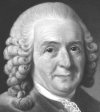 |
|
greatest figures in the field
of botany) is quoted from a website of the University of California at Berkeley Museum of Paleontology: "Carl
Linnaeus, also known as Carl von Linné or Carolus Linnaeus,
is often called the Father of Taxonomy. His system for naming, ranking,
and classifying organisms is still in wide use today (with many changes).
His ideas on classification have influenced generations of biologists
during and after his own lifetime, even those opposed to the philosophical
and theological roots of his work. He was born on May 23, 1707, at Stenbrohult,
in |
the province of Småland in southern Sweden. His father, Nils
Ingemarsson Linnaeus, was both an avid gardener and a Lutheran pastor,
and Carl showed a deep love of plants and a fascination with their
names from a very early age. Carl disappointed his parents by showing
neither aptitude nor desire for the priesthood, but his family was
somewhat consoled when Linnaeus entered the University of Lund in
1727 to study medicine. A year later, he transferred to the University
of Uppsala, the most prestigious university in Sweden. However, its
medical facilities had been neglected and had fallen into disrepair.
Most of Linaeus's time at Uppsala was spent collecting and studying
plants, his true love. At the time, training in botany was part of
the medical curriculum, for every doctor had to prepare and prescribe
drugs derived from medicinal plants. Despite being in hard financial
straits, Linnaeus mounted a botanical and ethnographical expedition
to Lapland in 1731. In 1734 he mounted another expedition to central
Sweden. Linnaeus went to the Netherlands in 1735, promptly finished
his medical degree at the University of Harderwijk, and then enrolled
in the University of Leiden for further studies. That same year, he
published the first edition of his classification of living things,
the Systema Naturae. During these years, he met or corresponded
with Europe's great botanists, and continued to develop his classification
scheme. Returning to Sweden in 1738, he practiced medicine (specializing
in the treatment of syphilis) and lectured in Stockholm before being
awarded a professorship at Uppsala in 1741. At Uppsala, he restored
the University's botanical garden (arranging the plants according
to his system of classification), made three more expeditions to various
parts of Sweden, and inspired a generation of students. He was instrumental
in arranging to have his students sent out on trade and exploration
voyages to all parts of the world: nineteen of Linnaeus's students
went out on these voyages of discovery. Perhaps his most famous student,
Daniel Solander, was the naturalist on Captain James Cook's first
round-the-world voyage, and brought back the first plant collections
from Australia and the South Pacific to Europe. Anders Sparrman, another
of Linnaeus's students, was a botanist on Cook's second voyage. Another
student, Pehr Kalm, traveled in the northeastern American colonies
for three years studying American plants. Yet another, Carl Peter
Thunberg, was the first Western naturalist to visit Japan in over
a century; he not only studied the flora of Japan, but taught Western
medicine to Japanese practicioners. Still others of his students traveled
to South America, southeast Asia, Africa, and the Middle East. Many
died on their travels. Linnaeus continued to revise his Systema
Naturae, which grew from a slim pamphlet to a multivolume work,
as his concepts were modified and as more and more plant and animal
specimens were sent to him from every corner of the globe. Linnaeus
was also deeply involved with ways to make the Swedish economy more
self-sufficient and less dependent on foreign trade, either by acclimatizing
valuable plants to grow in Sweden, or by finding native substitutes.
Unfortunately, Linnaeus's attempts to grow cacao, coffee, tea, bananas,
rice, and mulberries proved unsuccessful in Sweden's cold climate.
His attempts to boost the economy (and to prevent the famines that
still struck Sweden at the time) by finding native Swedish plants
that could be used as tea, coffee, flour, and fodder were also not
generally successful. He still found time to practice medicine, eventually
becoming personal physician to the Swedish royal family. In 1758 he
bought the manor estate of Hammarby, outside Uppsala, where he built
a small museum for his extensive personal collections. In 1761 he
was granted nobility, and became Carl von Linné. His later
years were marked by increasing depression and pessimism. Lingering
on for several years after suffering what was probably a series of
mild strokes in 1774, he died in 1778. His son, also named Carl, succeeded
to his professorship at Uppsala, but never was noteworthy as a botanist.
When Carl the Younger died five years later with no heirs, his mother
and sisters sold the elder Linnaeus's library, manuscripts, and natural
history collections to the English natural historian Sir James Edward
Smith, who founded the Linnean Society of London to take care of them. Linnaeus's plant taxonomy was based solely
on the number and arrangement of the reproductive organs; a plant's
class was determined by its stamens (male organs), and its order by
its pistils (female organs). This resulted in many groupings that
seemed unnatural. For instance, Linnaeus's Class Monoecia,
Order Monadelphia included plants with separate male and female
'flowers' on the same plant ( Monoecia) and with multiple
male organs joined onto one common base ( Monadelphia). This
order included conifers such as pines, firs, and cypresses (the distinction
between true flowers and conifer cones was not clear), but also included
a few true flowering plants, such as the castor bean. 'Plants'
without obvious sex organs were classified in the class Cryptogamia,
or 'plants with a hidden marriage,' which lumped together
the algae, lichens, fungi, mosses and other bryophytes, and ferns.
Linnaeus freely admitted that this produced an 'artificial classification,'
not a natural one, which would take into account all the similarities
and differences between organisms. But like many naturalists of the
time, in particular Erasmus Darwin, Linnaeus attached great significance
to plant sexual reproduction, which had only recently been rediscovered. The sexual basis of Linnaeus's plant classification
was controversial in its day; although easy to learn and use, it clearly
did not give good results in many cases. Some critics also attacked
it for its sexually explicit nature: one opponent, botanist Johann
Siegesbeck, called it 'loathsome harlotry.' (Linnaeus had
his revenge, however; he named a small, useless European weed Siegesbeckia.)
Later systems of classification largely follow John Ray's practice
of using morphological evidence from all parts of the organism in
all stages of its development. What has survived of the Linnean system
is its method of hierarchical classification and custom of binomial
nomenclature. For Linnaeus, species of organisms were real entities,
which could be grouped into higher categories called genera (singular,
genus). By itself, this was nothing new; since Aristotle, biologists
had used the word genus for a group of similar organisms, and then
sought to define the differentio specifica -- the specific
difference of each type of organism. But opinion varied on how genera
should be grouped. Naturalists of the day often used arbitrary criteria
to group organisms, placing all domestic animals or all water animals
together. Part of Linnaeus' innovation was the grouping of genera
into higher taxa that were also based on shared similarities. In Linnaeus's
original system, genera were grouped into orders, orders into classes,
and classes into kingdoms. Thus the kingdom Animalia contained the
class Vertebrata, which contained the order Primates, which contained
the genus Homo with the species sapiens -- humanity. Later biologists
added additional ranks between these to express additional levels
of similarity. Before Linnaeus, species naming practices
varied. Many biologists gave the species they described long, unwieldy
Latin names, which could be altered at will; a scientist comparing
two descriptions of species might not be able to tell which organisms
were being referred to. For instance, the common wild briar rose was
referred to by different botanists as Rosa sylvestris inodora seu
canina and as Rosa sylvestris alba cum rubore, folio glabro. The need
for a workable naming system was made even greater by the huge number
of plants and animals that were being brought back to Europe from
Asia, Africa, and the Americas. After experimenting with various alternatives,
Linnaeus simplified naming immensely by designating one Latin name
to indicate the genus, and one as a 'shorthand' name for
the species. The two names make up the binomial ('two names')
species name. For instance, in his two-volume work Species Plantarum (The Species of Plants), Linnaeus renamed the briar rose Rosa canina.
This binomial system rapidly became the standard system for naming
species. Zoological and most botanical taxonomic priority begin with
Linnaeus: the oldest plant names accepted as valid today are those
published in Species Plantarum, in 1753, while the oldest animal
names are those in the tenth edition of Systema Naturae (1758),
the first edition to use the binomial system consistently throughout.
Although Linnaeus was not the first to use binomials, he was the first
to use them consistently, and for this reason, Latin names that naturalists
used before Linnaeus are not usually considered valid under the rules
of nomenclature. In his early years, Linnaeus believed that
the species was not only real, but unchangeable -- as he wrote, 'Unitas
in omni specie ordinem ducit' (The invariability of species is the
condition for order [in nature]). But Linnaeus observed how different
species of plant might hybridize, to create forms which looked like
new species. He abandoned the concept that species were fixed and
invariable, and suggested that some -- perhaps most -- species in
a genus might have arisen after the creation of the world, through
hybridization. In his attempts to grow foreign plants in Sweden, Linnaeus
also theorized that plant species might be altered through the process
of acclimitization. Towards the end of his life, Linnaeus investigated
what he thought were cases of crosses between genera, and suggested
that, perhaps, new genera might also arise through hybridization.
Was Linnaeus an evolutionist? It is true that he abandoned his earlier
belief in the fixity of species, and it is true that hybridization
has produced new species of plants, and in some cases of animals.
Yet to Linnaeus, the process of generating new species was not open-ended
and unlimited. Whatever new species might have arisen from the primae
speciei, the original species in the Garden of Eden, were still part
of God's plan for creation, for they had always potentially been present.
Linnaeus noticed the struggle for survival -- he once called Nature
a 'butcher's block' and a 'war of all against all.'
However, he considered struggle and competition necessary to maintain
the balance of nature, part of the Divine Order. The concept of open-ended
evolution, not necessarily governed by a Divine Plan and with no predetermined
goal, never occurred to Linnaeus; the idea would have shocked him.
Nevertheless, Linnaeus's hierarchical classification and binomial
nomenclature, much modified, have remained standard for over 200 years.
His writings have been studied by every generation of naturalists,
including Erasmus Darwin and Charles Darwin. The search for a 'natural
system' of classification is still going on -- except that what
systematists try to discover and use as the basis of classification
is now the evolutionary relationships of taxa". Although Wikipedia wrongly states that
the genus Linnaea was published after himself by Carl Linnaeus in 1753, David Hollombe has informed me that "In [three works by Linnaeus] Hortus Cliffortianus, Flora Lapponica and Critica Botanica he indicates that Gronovius named it. Linnaeus was the first to publish it in the binomial system." The International Plant Names Index does list Gronovius as the author in 1753.
-
lino'ides: having the form of or some resemblance
to Linum, the genus of flax.
-
Lin'um: from linon, the old Greek name for flax used by Theophrastus. Stearn has this to say: " Until cotton came into supply in the 18th century, flax and hemp were the most important vegetable fibers at least as far as estern man was concerned. Flax is also the source of linseed." The genus Linum was published by Carl Linnaeus in 1753.
-
lipocar'pa: see the following entry.
-
Lipocar'pha: Umberto Quattrocchi's Dictionary of Plant Names says
"from the Greek leipo, "to be deficient, to be wanting"
and karphos, "chaff, splinter, twig, chip of straw, chip of wood," referring to the flowers
or to the deciduous squamae [scales as in the pappus of some members
of the Asteraceae]; some suggest a wrong derivation from lipos,
"fat," and karphos." FNA says "Greek, leipo, "to fall," and carpha, "chaff," referring to the deciduous transparent inner secondary scale of the spikelet in many species. The genus Lipocarpha was published in 1818 by Robert Brown.
-
Lip'pia: named for Dr. Agostino Lippi (1678-1705), a European naturalist, doctor, botanist and explorer. He was born in Paris of Italian ancestry. He was enrolled in medical school and received a bachelor’s degree in 1698, but a lack of money prevented him from proceeding further toward a doctor’s degree. In 1703 the superintendent of the King’s Garden, Guy-Crescent Fagon, asked Lippi to be physician and naturalist on the Lenoir du Roule mission to Ethiopia to establish diplomatic relations with the emperor. He explored the Sudan, located between Upper Egypt and Nubia, in 1704, and sent a collection of plant samples from Egypt to France before going on to Sudan. He was murdered there the following year, at the age of twenty-seven years, along with du Roule and four others. The manuscript he prepared, although never printed, was known and was in part used by Pitton de Tournefort for his Istitutiones rei herbariae. The genus Lippia was published by Carl Linnaeus in 1753.
-
Liquidam'bar: from the Latin liquidus, "liquid, flowing,"
and the Arabic ambar or anbar, "ambergris,"
in reference to the fragrant gum or terebinthine resin found in the bark and exuded by this tree. The genus Liquidambar was published by Carl Linneaus in 1753.
-
lis'ae: named for Domenico Lisa (1801-1867), Italian bryologist and gardener. He was born in Pecetto and hired at the Botanical Garden of Turin. He went to Sardinia in 1826 and 1827 to assist the researches of botanist Giuseppe Giacinto Moris. After Moris returned to Turin, Lisa remained in Sardinia and then returned there several times in succeeding years. In 1837 he published a monograph on the mosses of the Turin area. In 1852 he became custodian and chief gardener at the botanical gardens at Turin, a post he held until his death. The 'ae' ending usually implies that it is for a women, but an additional rule says that if the name of the person to be so honored ends with an 'a,' then it takes an additonal 'e.'
-
Lis'tera: named for Martin Lister (1638-1711), an English naturalist
and physician. The following is quoted from
 |
|
Wikipedia: "He was
nephew of Sir Matthew Lister, physician to Anne, queen of James I,
and to Charles I. He was educated at St. John's College, Cambridge,
1655, graduated in 1658/9, and was elected a fellow in 1660. He became
FRS [Fellow of the Royal Society] in 1671. He practiced medicine
at York until 1683, when he removed to London. In 1684 he received
the degree of MD at Oxford, and in 1687 became FRCP [Fellow of the Royal College of Physicians]. He contributed
numerous articles on natural history, medicine and antiquities to
the Philosophical Transactions. |
His principal works were Historiae animalium Angliae tres tractatus (1678); Historiae Conchyliorum (1685 1692), and Conchyliorum Bivalvium (1696). As a conchologist
he was held in high esteem, but while he recognized the similarity
of fossil mollusca to living forms, he regarded them as inorganic
imitations produced in the rocks. In 1683 he communicated to the Royal
Society (Phil. Trans., 1684), an ingenious proposal for a new sort
of map of countries together with tables of sands and clays, such
as are chiefly found in the north parts of England. In this essay
he suggested the preparation of a soil or mineral map of the country,
and thereby is justly credited with being the first to realize the
importance of a geological survey. He died at Epsom on the 2nd of
February, 1712." The genus Listera was published in 1813 by Robert Brown.
-
Lithocar'pus: from the Greek lithos,
"rock," and karpos, "fruit," an allusion
to the hard acorns, which actually are no harder than the acorns of
true oaks.
-
lithocar'yus: presumably from lithos, "rock," and carya or caryon from karyon, "a nut or walnut,"
in reference to the nutlets.
-
Lithophrag'ma: from the Greek words lithos,
"rock," and phragma, "hedge or fence, partition." FNA says that this epithet alludes to a rocky habitat or an unsuccessful attempt to render Saxifraga in Greek. The genus Lithophragma was published by John Torrey and Asa Gray in
1840.
-
lithospermo'ides: resembling genus Lithospermum.
-
Lithosper'mum: from the Greek lithos, "stone," and sperma, "seed." Lithospermum was published by Carl Linnaeus in 1753 and is variously called puccoon, gromwell, false gromwell and marbleseed.
-
littora'lis: of the seashore, from Latin litus, "seashore, coast, seaside, beach, strand."
-
littor'um: same as previous entry, the common name for this taxon
in the Jepson Manual is coastal dwarf mistletoe.
-
liv'ida: a Latin word meaning "lead-colored, bluish-gray."
-
llavea'na: named for Pablo de la Llave y Fernández de Ávila (1773-1833), a Mexican Catholic priest, botanist, poli-
 |
|
tician, author and minister of justice and religion of the Republic of Mexico. Wikipedia says: “He was born to a wealthy family and grew up in Córdoba, Veracruz. After a brilliant university career, he became a teacher in the national college of St. John Lateran and doctor of theology at what was then the University of Mexico. He was a famous preacher and made some translations from Hebrew. He went to Europe and lived for some time in Paris. After this he became deputy director of the Madrid Museum of Natural History under the Bonapartist kingdom. In 1811 and 1812 he |
assisted José Mariano Mociño in organizing the collections of the Nueva España Expedition (1787–1803) to survey the natural history of Mexico. In 1820 and 1821 he represented the state of Veracruz in the Spanish legislature, where he was a liberal. On his return to Mexico after it declared independence, he held church positions including treasurer of the church at Morelia (then called Valladolid), Michoacán. By 1823 he was minister of justice and of church matters in the imperial administration of Agustín de Iturbide. In 1824, the first president of Mexico, Guadalupe Victoria, named him to the new cabinet. He also held the office of senator for Veracruz. Politically, Llave has been considered a liberal and an obedient follower of the republican priest and politician Miguel Ramos Arizpe. In biology, he and his collaborator Juan José Martínez de Lejarza (or Lexarza) were the first to systematically study the orchids of Michoacán. In 1824 they published a work describing about 50 species. In 1831 La Llave was designated to direct the National Museum of Natural History of Mexico. In 1832 and 1833 he published ornithological papers in a short-lived Mexican journal in which he described and named several birds, of which the rufous-tailed hummingbird and the much more famous resplendent quetzal were new to science. Because of the obscurity of the journal, he did not receive credit for a few decades, and some sources incorrectly give the date of the paper as 1871, possibly the date of a republication.” He died in Córdoba.
-
loba'ta: lobed, from Greek lobos and Latin lobus, "a lobe."
-
lob'bii: named for William Lobb (1809-1863), an English botanist
who collected plants in the Santa Lucia Mountains of coastal central California. He was sent out
from England by the nursery firm of James Vetch to collect seeds suitable
to grow as decorative plants in England, and he collected seeds of
the redwood tree in 1852, representing the first scientific recognition
of this species. Lobb's seeds and specimens were examined by John
Lindley, and it was he who described the species and named it Wellingtonia
gigantea for the Duke of Wellington, who had died the year before.
It was subsequently renamed Sequoia gigantea when that genus
was established. Other names proposed by Americans were Sequoia washingtoniana and Americus gigantea, but it is
known today as Sequoiadendron gigantea.
-
Lobe'lia: named for Matthias de l'Obel (1538-1616),
(also known as Lobelius), a Flemish botanist. According to
 |
|
Umberto Quattrocchi, L'Obel "studied at the University of Montpellier,
[was a] traveller and plant collector, from 1565 to 1566 worked with
Guillaume Rondelet at Montpellier, [was] physician to William, Prince
of Orange, attended Lord Edward Zouche in his embassy to the court
of Denmark, [was] botanist and physician to King James I of England,
[and] superintended a physic garden at Hackney." "His Stirpium
adversaria nova (1571, written with Pierre Pena) is one of the
milestones of modern botany. Later, Stirpium observationes,
a sort of complement to the Adversaria, was |
joined to it under
the title Plantarum seu stirpium historia (1576). His botanical
work was directed toward the pharmacological use of plants. L'Obel
published an essay on the pharmacology of Rondelet as part of a reissue
of his Adversia in 1605. He referred to Lord Zouch's garden
as the garden of medicine." (Quoted from a website called the Galileo
Project at Rice University). The genus Lobelia was published by Carl Linnaeus in 1753.
-
Lobular'ia: from the Latin lobulus,
"a small pod," referring to the fruit. The genus Lobularia was published by Nicaise Augustin Desvaux in 1814.
-
locus'ta: a Latin word meaning "locust, grasshopper."
-
Loefling'ia: named for Pehr (Peter) Löfling (sometimes spelled Loefling) (1729-1756), a Swedish naturalist, botanist and explorer. Wikipedia says: “Löfling was born in Tolvfors Bruk, Gävle, Sweden. He studied at the University of Uppsala where he attended courses taught by Carl Linnaeus. When the Spanish ambassador asked Linnaeus to select a botanist for service in the American colonies, the professor at once named Loefling. He went to Spain in 1751 to learn Spanish, and then embarked with other scientists for South America in February, 1754. In Cumana (actual Venezuela) he had entire charge of the department of natural history, and was assisted by two young Spanish doctors. He died in San Antonio de Caroni (Guayana, Venezuela). His death was considered a great loss to natural history, and especially to botany. Linnæus believed the loss irreparable. The manuscripts of Löfling, which were found after his death, were preserved by his two assistants. Linnæus used the name Loeflingia for the genus of some plants in the Caryophyllaceae family, one species of which grows in Spain and the other in Spanish America.” When he was in Spain he also studied the flora of the region surrounding Madrid. He received his degree in 1743 and was described by Linnaeus as a “most beloved pupil.” Linnaeus took him into his own home as a companion to his son. In 1750 he was in Uppsala helping Linnaeus with his Philosophia botanica, and it was the following year that Linnaeus suggested him for the trip to Spain, during which time he collected around 1,400 different species. He was also a promoter of Linnaeus’ sexual classification system in a land where botanists mostly followed the natural classification system of de Tournefort. During his trip to South America led by Joseph de Iturriaga, he was beset by constant illness, and finally succumbed to malaria in 1756 at the age of 27. Despite his early demise, he had managed to send some 600 species back to Europe, including 30 genera and 250 species not previously recognised. The genus Loeflingia was published by Carl Linnaeus in 1753.
-
Loeselias'trum: from the Latin for "like
Loeselia." The genus Loeseliastrum was published by Steven LeroyTimbrook in 1986.
-
Loesel'ia/loesel'ii: named for German botanist and physician Johannes Loeselius (1607-1655), a professor of medicine in Königsberg, 1639-1655. He was born in Brandenburg and received his first education at Insterburg and then in 1626 he began his studies in Königsberg. From 1630 to 1631 he studied in Frankfurt and was awarded a master’s degree in Königsberg in 1632. Later he traveled as an educator to several countries including France, England and Holland, and then to Transylvania. In 1636 he was registered at the University of Rostock and in 1639 obtained a doctorate in medicine at the University of Leiden. He served as a professor of medicine at the University of Königsberg. Loeselius had been working on a flora of Prussia which he was unable to finish due to illness. His son Juan published it in 1654 under the title of Plantae in borussia sponte nascentes and manuscriptis parentis. Johann Gottsched (1668-1704) revised and expanded the manuscript and the result was published in 1703 as Flora Prussica. The genus Loeselia was published by Carl Linnaeus in 1753.
-
loeseneria'nus: named for Ludwig Eduard Theodor Lösener (Loesener) (1865-1941?), a German botanist who was born in Berlin. He collected widely in Europe including Amrum Island (one of the islands off the German North Sea coast), the Alps, the Black Forest, Bavaria, Tyrol and Rügen Island off the Pomeranian coast in the Baltic Sea. His speciality was the Aquifoliaceae of the world. He also studied cultivars of Ilex species.
-
Logania'ceae: named for James Logan (1674-1751), a colonial American stateman and scholar. He was born in
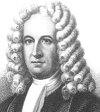 |
|
County Armagh in Northern Ireland and was apprenticed to a Dublin linen-maker. His father who was a highly-educated Anglican clergyman before converting to Quakerism, moved with his family from Ireland first to Edinburgh, and then to London, finally to Bristol, where his son James took over from his father in 1693 as a schoolmaster. In 1699 he came to the colony of Pennsylvania aboard the Canterbury as William Penn's colonial secretary. Wikipedia says: “After advancing through several political offices, including commissioner of property (1701), receiver general |
(1703), clerk (1701), and member of the provincial council (1703), he was elected mayor of Philadelphia in 1722. During his tenure as mayor, Logan allowed Irish Catholic immigrants to participate in the city's first public mass. He later served as the colony's chief justice from 1731 to 1739, and in the absence of a governor of Pennsylvania, became acting governor from 1736 to 1738. Meanwhile, he engaged in various mercantile pursuits, especially fur trading, with such success that he became one of the wealthiest men in the colonies. He wrote numerous scholarly papers published by the American Philosophical Society and European journals. Logan was also a natural scientist whose primary contribution to the emerging field of botany was a treatise that described experiments on the impregnation of plant seeds, especially corn. He tutored John Bartram, the American botanist, in Latin and introduced him to Linnaeus. [He] is perhaps best known for being a bibliophile, confessing once that "Books are my disease." He collected a personal library of over 3,000 volumes. Some commentators consider Logan's library to have been the largest and best collection of classical writings in America at that time. Logan's library contained many 17th and 16th century classical works such as a 1615 edition of Archimedes' works, the mathematical treatise of Pappus of Alexandria printed in 1660, an Aratus of Soles from 1672, Elzevir's architecture publication of 1649 from Amsterdam, Johann Vossius' De Quatuar Artibus Popularibus published in 1650, and a 1599 edition of an astronomy work edited by Barthelemy Pitiscus.” Mentor to Benjamin Franklin, he was also a founder and trustee of the Academy of Philadelphia (now the University of Pennsylvania). He died near Germantown at the age of 77.
-
Logfi'a: apparently an anagram of the genus Filago. The genus
is undergoing some revision, and the names Logfia and Oglifa,
both anagrams, are in the running to take part of the original genus. The author of Filago has apparently decided to forego the use of the name Oglifa in favor of Logfia, with only a single species remaining in Filago.
The genus Logfia was published by Alexandre Henri Gabriel de Cassini in 1819.
-
Lo'lium: the classical common name for ryegrass. The genus Lolium was published in 1753 by
Carl Linnaeus.
-
Loma'tium: from the Greek loma for
"bordered," from the prominent marginal fruit wings. Lomatium was published by Constantine Samuel Rafinesque in 1819.
-
lompocen'se: of or from Lompoc, California or that area.
-
lonchi'tis: from lonche, "spear," and lonchitis,
a plant with spear-shaped seeds. Lonchitis was an ancient fern name used by Dioscorides.
-
lonchocar'pa: with spear-shaped fruit.
-
lonchol'epis: from lonche, "spear," and lepis,
in compound words signifying a scale, thus meaning a spear-shaped
scale.
-
lonchophyl'la/lonchophyl'lus: spear-leaved, from the Greek lonche, "a
lance," and phyllus, "leaf."
-
lon'chus: possibly derived from Greek lonche,
meaning "a spear."
-
lon'ga/lon'gum/lon'gus: used in compound words to signify "long."
-
longae'va: of great age, long-lived.
-
longebarba'tus: long-bearded or long-haired.
-
longibractea'ta: long-bracted.
-
longicau'lis: long-stemmed.
-
longiflor'a/longiflor'us: refers to the
length of the corolla.
-
longifo'lia/longifo'lius:
with long leaves.
-
long'ii: named for Bayard Henry Long (1885-1969). His father was a lawyer who established a law practice in
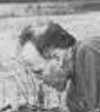 |
|
Philadelphia. Bayard attended Cheltenham High School and was the orator of his class upon graduation in 1904. He majored in botany at the University of Pennsylvania and graduated in 1908 with a BS degree in biology. It is unclear why he registered in the graduate school of arts and sciences but apparently did not receive a graduate degree. At some point, probably while taking courses in botany at the University, he became affiliated with the Philadelphia Academy of Natural Sciences. In 1906 he had joined the Philadelphia Botanical Club and by 1913 was elected curator |
of the club’s local herbarium. He was annually re-elected to this unpaid position every year until his death, an incredible span of 56 years. During this time Long was a frequent member of field excursions to places such as the Pine Barrens of New Jersey, the glaciated areas of Northampton County, the serpentine outcrops of Lancashire and Chester Counties, and other localities. Professor Merritt Lyndon Fernald named at least seventeen plants in Long’s honor. In 1920 he was with Fernald exploring Nova Scotia and in 1924 and 1925 he was a member of a party exploring Newfoundland. In the 1930s he was with Fernald again botanizing in the coastal plain region of southeastern Virginia. “It is doubtful that anyone ever possessed a higher standard for the quality of an herbarium specimen than Bayard Long. Every leaf had to be laid out flat, every inflorescence properly displayed, every flower part clearly shown. Extra flowers and loose fruits and seeds were placed in pockets affixed to the sheet. Root systems (collected in their entirety whenever possible) were scrupulously clean, habitats were accurately described and localities were identified to the the nearest tenth of a mile and closest compass point. All of this seems the more remarkable when it is realized that Long collected close to 80,000 numbers, not including collections made as a member of Fernald’s expeditions.” (Information and the foregoing quoted from an article by John M. Fogg in the journal Bartonia of the Philadelphia Botanical Club, No. 39, 1969). Although illness was beginning to bother him, he worked at the Academy until the fall of 1962, and thereafter continued by letter to maintain contact with all those who shared his passion for plants. When he died, he donated his considerable estate to the Philadelphia Academy. He is buried in Hanover, York County, Pennsylvania. (Photo credit: Bartonia, No. 39, 1969)
-
longilig'ula: long-liguled.
-
longiligula'tum: same as previous entry.
-
-
longipeduncula'ta: with elongated peduncles.
-
-
longipet'ala: with long petals.
-
longiros'tris: long-beaked.
-
longisep'ala: with long sepals.
-
longise'ta: long-bristled.
-
longispi'na/longispi'nus: long-spined.
-
longis'sima: very long.
-
longistipita'ta: long-stalked or with a long stipe.
-
Lonic'era: named for Adam Lonitzer (Lonicer, Lonicerus) (1528-1586), a German herbalist, physician and botanist
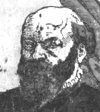 |
|
who revised a standard herbal text dating from 1533 that was reprinted many times between 1557 and 1783. The son of a theologian and philologist, and a professor of theology and ancient languages at Marburg, Johannes Lonicerus, Adam was born at Marburg and studied there and at the University of Mainz, obtaining a Magister degree at the age of sixteen. In 1553 he became a professor of mathematics at the Lutheran University of Marburg and received a doctor of medicine the following year, becoming the town physician of Frankfurt-am-Main. His true interest was |
herbs and the study of botany. His first major work was Naturalis historiae opus novum published in 1551. This was followed by the Kreuterbuch, published in 1557, which was a compilation of work done by Dr. Eucharius Rosslin, Jean Ruelle, Valerius Cordus, Pietro Andrea Mattioli, Hieronymus Braunschweig and Conrad Gessner. This book was an amalgam of scientific fact, anecdotal knowledge, tall stories, and medieval herbal tradition, and included references to fictitious plants and animals, but was immensely popular right up to the 19th century. The genus Lonicera was published in his honor in 1753 by Carl Linnaeus.
-
loomis'ii: named for Harold Frederick Loomis (1896-1976), a well-known specialist on the millipedes of the West
 |
|
Indies and Central America. A botanist and horticulturist by profession, he also collected material in China and the western United States and became director of the US Plant Introduction Station in Miami in 1931, a position which he held for the last 27 years of his professional life. He described new millipede taxa in 51 papers, publishing a total of nine new families, 129 new genera and 525 new species. He was born in Farmington, New York, and joined the US Department of Agriculture in 1914 studying diseases of crop plants. He made major contributions to the natural history of |
Central America and the West Indies, and was a charter member of the Fairchild Tropical Botanic Garden in Coral Gables, Florida. Wikipedia says further that: “His other area of research was in arthropods. Loomis was an honorary research fellow in entomology at the Smithsonian Institution, and an active research collaborator with the National Museum of Natural History, and Florida State Collection of Arthropods in Gainesville. Early in his career he began working with fellow botanist/entomologist Orator F. Cook. In 1919 Loomis accompanied Cook on an expedition to China to study crops as well as collect millipedes, and in 1928 Loomis and Cook described the millipede with the greatest number of legs known, Illacme plenipes of California. With individuals possessing up to 750 legs (375 pairs), Illacme has more legs than any animal known. Loomis later described another species from Panama with 700 legs. In terms of numbers of species described, Loomis ranks as one of the ten most prolific millipede taxonomists in history.”
-
lophan'tha: from the Greek lophos,
"a crest," and anthos, "flower," thus "having
crested flowers."
-
Loranderson'ia: named for Loran Crittenden Anderson (1936-2022), an American enthusiast of the Asteraceae, especially Chrysothamnus and related taxa. He was in the Department of Biological Sciences at Florida State University, and has made botanical expeditions to the Dominican Republic. He was the author of Cytotaxonomic Studies in Chrysothamnus (1966), Floral Anatomy of Chrysothamnus (1970), and Additional Chromosome Numbers in Chrysothamnus (1971). The genus Lorandersonia was published in 2005 by Lowell Edward Urbatsch, Roland P. Roberts and Kurt M. Neubig, and it has now been changed to Tonestus.
-
Lorentziel'la: named for Paul Günther Lorentz (1835-1881), a German-Argentine botanist and explorer who was
 |
|
born in Kahla, Thuringia. He first studied theology at the Universities of Jena and Erlangen, completing those studies in 1858, but then pursued botany at the University of Munich. He was particularly drawn to the study of mosses and collected specimens from the Black Forest, the Austrian Alps, Switzerland, northern Italy and Scandinavia. He emigrated to Argentina in 1870 and became professor of botany at the University of Córdoba. With his assistant, Georg Hieronymous, he searched for bryological specimens throughout many parts of Argentina and the Gran Chaco, |
a semi-arid lowland region comprised of parts of Bolivia, Paraguay, Argentina and Brazil. In 1874 he resettled in Concepción del Uruguay as an instructor of natural history. He died there at the age of 46 as a result of liver disease. He collected many species of flowering plants, mosses and lichens that were new to science. Also, he is credited with providing the first phytogeographical map of Argentina, and was a collaborator with Wilhelm Philippe Schimper on his Geographie der Moose (Geography of Mosses). He discovered more than 200 new species of mosses, many of which are named for him. The genus Lorentziella was published in 1877 by Émile Bescherelle.
-
lorenzen'ii: named for Lewis Norman Lorenzen (1884-1973). The taxon in the California flora was Ceanothus X lorenzenii, called Lorenzen's ceanothus, validly published by Willis Linn Jepson but was revised and reclassified by Howard Earnest McMinn in 1942.
-
loto'ides: resembling Lotus.
-
lott'iae: named for Patricia Ann Lott (1936-1980). Arnold Tiehm,
in Nevada vascular plant types and their collectors says that
Pat Lott of Fallon, Nevada, was on a "fishing trip to Desert
Creek in the Sweetwater Mountains when she collected a batch of what
she thought were chokecherries. Embarassed to find she had rose hips,
she became determined to avoid making such a mistake again and began
to learn the native plants. Her humorous articles published in the
first five volumes of Northern Nevada Native Plant Society newsletters
show her love of life, sense of humor and ability to laugh at herself.
It is unfortunate that she died of a stroke in her mid-forties (while
on a hunting trip with her husband, George William Lott, Jr.)."
She went on plant-hunting trips with Laura Mills beginning in 1969.
-
Lo'tus: from Latin lōtus and ancient Greek lotos, originally applied
to a fruit which was said to induce a state of dreamy and contented forgetfulness in those who ate it, perhaps derived of semitic origin. The genus Lotus was published by Carl Linnaeus in 1753.
- louis'eae: named for Louise Ann Cindric Kartesz (Mrs. Andrew Charles Kartesz) (1922-2017), the mother of one of the authors of the taxon Cynanchum louiseae, John Thomas Kartesz. She was born in Buena Vista, Pennsylvania, and died in Addison, Pennsylvania.
-
louise-bucar'iae: named for Louise Ilene Griset (Mrs. Pat Paul Bucaria) (1908-1966). Louise was born in Los Angeles and grew up in Santa Ana, and earned degrees from the University of Redlands and University of California in zoology and education, and taught in the Moreland, Los Gatos and San Jose school districts. Her last position was at Joseph M. McKinnon School for the Mentally Retarded. Her husband's occupation is listed in 1940 as barber. Louise died in Saratoga, Santa Clara County, California. (Lupinus louise-bucariae).
- loui'se-griset'iae: see above entry. (Lupinus louise-grisetiae)
-
louisian'ica: of or from Louisiana.
-
lov'eae: named for Doris Benta Maria Wahlén Löve (1918-2000, a Swedish systematic botanist, particularly active in the Arctic, and wife of noted Icelandic botanist Áskell Löve (see Askellia). Wikipedia provides this: "Doris Löve was born in Kristianstad, Sweden. She studied botany at Lund University from 1937. She married her fellow student and colleague, the Icelander Áskell Löve. She received her PhD in botany in 1944. She focused her doctorate on the sexuality of Melandrium. After their studies, the couple moved to Iceland. They moved to Winnipeg in 1951, to Montreal in 1955, and to Boulder in 1965. At universities where Áskell Löve taught, Doris Löve could not hold a faculty position at the same time as her husband. They finally moved to San Jose, California, in 1974. Together, Áskell and Doris Löve undertook numerous investigations of the chromosome numbers of plants and their use in plant systematics. They published numerous accounts in this field, and are considered the founders of cytotaxonomy. In 1962, she was the convener of an influential scientific conference on the North Atlantic Biota and their History. In 1974, her husband Áskell Löve, then full professor and chairman of the biology department of the university of Colorado Boulder, was forced to resign. In 1997, she wrote her family history, a 86-page biography that provides a detailed explanation of her husband's forced resignation. This mémoire was deposited at the Hunt Botanical Library in Pittsburgh in 1997 and was supposed to be kept unreleased until 2018."
-
lowia'na: named for Hugh Low (1793-1863), a Scottish nurseryman, and his 2nd son Stuart Henry Low (1826-1890).
Hugh Low was the founder of Hugh Low & Co., a well-known nursery at Upper Clapton near London, which he had purchased from J.L. Mackay, and where he had been employed since 1823. Stuart Henry Low was privately educated and joined the merchant navy, returning to Clapton in 1845 and taking over the nursery at Upper Clapton on his father’s death in 1863. In 1882, he established a new nursery at Bush Hill Park, Enfield, Middlesex, a few miles north of the original establishment. He was a friend of John Day and supplied Day with orchids to paint for his scrapbooks. He died at Clapton. Hugh Low's other son, the future Sir Hugh Low (1824-1905), was a botanist who originally worked at his father's nursery, went to southeast Asia in 1813 to collect orchids, became the first westerner to ascend to the summit of Mt. Kinabalu on Borneo, remained in Borneo for 28 years, planted the first rubber trees grown in Malaysia, made notable entomological collections, and became a successful colonial administrator in the Malay Peninsula.
-
lu'ciae: named for the Santa Lucia Mts between the Big Sur coast and
the Salinas Valley.
-
lucia'num/lucia'nus: see previous entry.
-
lu'cida/lu'cidum/lu'cidus:
glossy, clear or shining.
-
lucien'se/lucien'sis: same as luciae above.
-
ludovicia'na/ludovicia'nus: of or from Louisiana.
-
Ludwig'ia: named for Christian Gottlieb Ludwig (1709-1773), a German botanist, plant collector and a professor of
 |
|
medicine in Leipzig. He was born in Brieg, Silesia (now Brzeg, Poland) the son of a shoemaker and attended high school there. Beginning in 1728 he studied medicine, botany and natural sciences at the University of Leipzig, but the pecuniary condition of his family caused him to discontinue his studies. He took a job as a botanist on an African expedition led by naturalist Johann Ernst Hebenstreit. In 1733 he managed to resume his studies, giving lectures from 1736 and earning his doctorate the following year. He became an associate professor of medicine in 1740, and in 1747 |
he became a full professor of medicine. He carried on a correspondence with other botanists, in particular Carl Linnaeus, discussing with him his sexual classification system. He was the author of De sexu plantarum (1737), Institutiones historico-physicae regni vegetabilis (1742), Definitiones generum plantarum (1747), Terrae Musei Regii Dresdensis (1749), Adversaria Medico Practica (1769-1773), and other works. One of his sons was the physician/naturalist Christian Friedrich Ludwig and another was a physician and scientist known for his translation of Joseph Priestley's scientific experiments. The genus Ludwigia was published in his honor by Carl Linnaeus in 1753.
-
ludwig'ii: named for Carl Ludwig (?-?), a nurseryman, horticulturist and plant collector in Meffersdorf, Silesia. He later lived in Dresden and Halle. He was active around 1798-1806 and collected in the Jizera Mountains in Czechoslovakia. He issued what was probably the earliest exsiccatae (a set of dried herbarium specimens) of lichens and bryophytes from Bohemia (and Polish Silesia) which he had collected in the Krkonoše (or Giant Mountains) entitled Kryptogamische Gewächse des Riesengebirges).
-
Luet'kea: named for Count Fedor Petrovich Lütke (1797-1882), a Russian naval officer, navigator, geographer and
 |
|
Arctic explorer, founder and several times vice-president of the Russian Geographical Society, and finally president of the Russian Academy of Sciences, 1864-1882. His name is also sometimes referred to as Friedrich Benjamin Lütke which would have been his German name since he was of German ancestry. Wikipedia says: “Count Friedrich Lütke (Russified as Fyodor or Fedor Litke) came from a family of Baltic Germans. Count Lütke’s grandfather was Johann F. Lütke, a German Lutheran preacher and writer on physical science and theology. In 1745, Johann Lütke went from |
Germany to Moscow as pastor of a Lutheran parish in order to spread Protestantism to Russia and Baltic provinces. As a youth, Fyodor attended a Lutheran German-speaking school. His maternal language was German and he always spoke Russian with a German accent. He remained a practicing Lutheran.” He joined the Imperial Russian Navy in 1813, took part along with Ferdinand Wrangel in the world cruise of the ship Kamchatka in 1817-1819, led an expedition to explore the coastline of Novaya Zemlya and the White and eastern Barents Seas from 1821 to 1824, and then commanded the corvette Senyavin on its around-the-world cruise from 1826 to 1829, collecting thousands of plant, animal and mineral samples. In 1835 he became tutor to the son of Tsar Nicholas I. He was military governor of the ports of Reval (today's Tallinn in Estonia) and later Kronstadt in 1850–1857. In 1855, Lütke became a member of the Russian State Council which was the institution which predated the Duma. The genus Luetkea was published for him by Ernst Gottlieb von Steudel in 1841.
-
lu'gens: apparently from the Latin lugens,
which Jaeger's Sourcebook of Biological Names and Terms says
has something to do with mourning or wearing mourning apparel and
which is obviously of unknown application. The root would seem
to be lugeo, "mourning, grieving, lamenting," and lugere, "to mourn." Lugens is a relatively
common specific name and has been used not only in plants, but also
in animals, birds and insects, among which are the caterpillar Uraba lugens,
the damselfly Argia lugens, the beetle Agonum lugens,
the butterfly Agrias lugens, the widow monkey Callithrix lugens, and birds called the mourning
wheatear or Oenanthe lugens and the dusky turtle dove or Steptopilia lugens. Several correspondents have
contributed pretty much the same thing, that it refers to a dark or dusky coloration
or pattern.
-
Lui'na: an anagram of Inula. The genus Luina was published by George Bentham in 1873.
-
Lu'ma: a Chilean name for some species of Myrtaceae in that country. The genus Luma was published in 1853 by
Asa Gray.
-
Lunar'ia/lunar'is: from the Latin luna,
"moon," for the flat, round seedpods or their white-silver color similar to that of the moon. The genus Lunaria was published by Carl Linnaeus in 1753.
-
lunel'lii: named for Joël Lunell (1851-1920), a Swedish-American botanist and physician. He was born in Kalmar, Sweden, and studied medicine for six years in Uppsala. Off and on he taught music and Latin. After graduating, he wrote several books and translated many from German, French and English into Swedish. He was married in 1884 and emigrated with his family in 1888, first settled in Willow City, a small community in North Dakota, first serving as a doctor and postmaster. In 1894, the family moved to Leeds, where he received many positions of trust, such as mayor, alderman, and coroner. Most of his spare time was devoted to his great interest in botany. He created a herbarium of over 30,000 specimens, a collection which was eventually donated to the University of Montana.
-
lunula'tum: crescent-shaped.
-
Lupi'nus: Stearn says: "Supposed to be derived from lupus, 'a wolf,' because of the completely erroneous belief that these plants destroyed the fertility of the soil." Wiktionary gives a different interpretation, saying that "The reason for association of the plant with the wolf is the wolf-like 'fang' within the blossom." The Jepson eflora gives other ideas: "Latin wolf, from plants overrunning ground, or sadness, from facial response to harsh seed taste; meaning uncertain." The genus Lupinus was published by Carl Linnaeus in 1753.
-
lupuli'na: Stearn says "hop-like." Gledhill says: "hoplike, with the rampant habit of hops." Another source says "The specific epithet lupulina means 'wolf-like' - a reference to the flowers of the common hop Humulus lupulus, which its inflorescence resembles." The common hop is Humulus lupulus, and the species name lupulus is a diminutive derived from lupus, the Latin word for wolf, based on the plant's habit of climbing on other plants as a wolf does a sheep. One of the common names for Medicago lupulina is hop clover.
-
lup'ulus: literally a "small wolf," alluding to the plant's
habit of climbing over and smothering trees on which it grows. H.
lupulus is the European hop and was once called "willow-wolf"
because of its propensity for climbing on willows, and the word shows
up again in the species Medicago lupulina [see above].
-
lu'rida: smoky yellow, sallow, wan, from Latin luridus, "pale yellow, ghastly, the color of bruises," a word of uncertain origin and etymology.
-
lusitan'ica/lusitan'icum: of Portugal (Lusitania), Portuguese.
-
lu'tea: yellow, from a weedy source of yellow dye called lutum.
-
luteoal'bum: yellow-white.
-
luteo'la/luteo'lus: yellowish.
-
lutes'cens: yellowish.
-
-
lutheya'na: named for Robert Greene Luthey (1915-2003), a talented amateur photographer born in Oklahoma City. He was an employee of the Kern County Road Department at Kernville. He and his wife Carol discovered a distinctive columnar form of Juniperus californica in the Kernville and Bodfish area. He died in Bakersfield, California.
-
Lu'zula: possibly from the Italian lucciola,
"firefly, glowworm," or "to shine, sparkle," from the shining inflorescence. FNA provides the additional possibility that it derives from Latin luzulae or luxulae, diminutive of lux, "light," because hairs of several species have a shiny appearance when covered with dew. The genus Luzula was published in 1805 by Augustin Pyramus de Candolle and is called woodrush.
-
luzulifo'lia: with leaves like genus Luzula.
-
luzuli'na: either resembling genus Luzula or a small form
of Luzula.
-
luzulo'ides: having the form of or similarity to genus Luzula.
-
lyallia'num/lyal'lii: named for David Lyall (1817-1895), another of the many people
who came to botany through
 |
|
medicine. He was born in Auchenblae, Kincardineshire, Scotland, and graduated in medicine from Aberdeen, having previously been admitted a licentiate of the Royal College of Surgeons of Edinburgh. His first job was as surgeon to a whaling ship in Greenland, then he became an officer in the British navy, first undertaking a journey
to Greenland, and then being appointed assistant-surgeon of the HMS Terror, one of two ships participating on a several-year-long voyage to the Antarctic with Sir James Clark Ross. During this expedition they were the first to penetrate the |
Antarctic pack ice and to confirm the existence of the great southern continent, and Lyall collected some 1,500 species of plants and amassed a beautiful
collection of algae samples. There followed service in the Mediterranean,
and then he was selected to be surgeon and naturalist aboard the HMS Acheron for its survey of the coast of New Zealand, at which time
he again did significant work, this time specializing in the lower
orders of plants, and discovering the monarch of all buttercups, Ranunculus
lyallii, the only known species with peltate leaves. Shortly thereafter he was appointed surgeon and naturalist
for the Assistance, one of the squadron sent to the Arctic regions
in search of Sir John Franklin. During this voyage he made the most
extensive herbarium ever formed in the American polar islands. He
participated in the Baltic campaign of 1855 (also called the Crimean
War), took part in a mission to delimit the sea boundary between Great
Britain and the United States, then went on to work on setting the
land boundary between British Columbia and US possessions, an excursion
from which he brought back another magnificent herbarium of specimens
which so impressed Sir William Hooker that he arranged to have Lyall
stationed at Kew so he could arrange and report on his collection
and for the first time describe the vegetational zones of British
Columbia. All of his achievements cannot be elucidated in this brief
account, but suffice it to say that he made major contributions to
the field of botany. (Photo credit: Heritage Gardens of the Columbia Basin.
-
Lych'nis: from the Greek lychnos for "lamp," from
the flame-colored flowers of some species. The genus Lychnis was published by Carl Linnaeus in 1753.
-
Ly'cium: from the Greek name Lykion used by Pedanius Dioscorides and Pliny the Elder for some thorny tree or shrub, perhaps some species of Rhamnus, deriving probably from the Greek lykion for "thorn," and reapplied by Linnaeus as the name for this genus. It is sometimes said that the root is the Greek lykos for “wolf,” hence one of the common names wolfberry, but this now seems unlikely. It is possible that the tree also came from the ancient southern Anatolian region of Lycia. There is disagreement as to whether it should be pronounced LY-see-um, LIS-ee-um, LIK-ee-um, or ly-SEE-um, however Merriam Webster has the following "Lycium (\'lis(h)ēəm\): NL, fr. Gk lykion, a thorn from Lycia, fr. neut. of Lykios Lycian," so that would indicate that it should be pronounced either LIS-ee-um or LISH-ee-um. The genus Lycium was published in 1753 by Carl Linnaeus.
-
lycoper'sicon: from Greek lykos,
"wolf," and persicon, "a peach," because
of supposed poisonous properties, and originally the name of an Egyptian
plant later transferred to this American genus. The genus Lycopersicon was published in 1754 by Philip Miller.
-
Lycopodiel'la: a diminutive of Lycopodium. The genus Lycopodiella was published by Josef Ludwig Holub in 1964.
-
lycopodio'ides: resembling Lycopodium or club-moss.
-
Lycopo'dium: from the Greek lykos, "wolf," and podion,
"a foot," from some imagined resemblance of the branch tips
to a wolf's foot. The genus Lycopodium was published in 1753 by Carl Linnaeus.
-
Lycop'sis: from the Greek lykos, "wolf," and opsis,
"appearance." The genus Lycopsis was published by Carl Linnaeus in 1753.
-
lycopso'ides: like genus Lycopsis.
-
Lyco'pus: from the Greek lykos, "wolf," and pous,
"foot." The genus Lycopus was published by Carl Linnaeus in 1753.
-
Lycur'us: from the Greek lykos, "a wolf," and oura,
"a tail," alluding to the shape of the inflorescence. The genus Lycurus was published by Karl Sigismund Kunth in 1815.
-
lyel'lii: named for Charles Lyell (1767-1849), a Scottish botanist and father of the famous geologist Charles Lyell. He was born in Scotland and educated at St Paul's School, London, the University of St. Andrews and Peterhouse, Cambridge, where he graduated BA in 1791, proceeding to an MA in 1794. He was a law student at Lincoln’s Inn, which was one of the four Inns of Court in London to which barristers of England and Wales belong and where they are called to the bar. He inherited the Kinnordy estate of his father in 1796 and gave up the law as a profession and subsequently married. From 1797 to 1825 he lived at Bartley Lodge near Cadnam in Hampshire, England, within the boundaries of the New Forest National Park in southern England. He became a fellow of the Linnean Society in 1813 and in 1826 settled at Kinnordy in Scotland. He was drawn to the study of mosses and had several species named for him as well as the genus Lyellia published by Robert Brown. He also contributed lichens to James Edward Smith's English Botany, and while not publishing, he corresponded with William Jackson Hooker, James Sowerby and Brown. Before his wife died in 1850, she bore him three sons and seven daughters. He was also a devotee of the works of Dante, and wrote an English translation of Dante’s Inferno as well as translations of Dante’s poetic works.
- Lygodes'mia: from the Greek words lygos, meaning "pliant twig," and desme, meaning "bundle," referring to the plant's fascicled, twiggy, or rush-like stems.
-
lyng'byei: named for Danish algae researcher Hans Christian Lyngbye (1782-1837).
The following is quoted from a
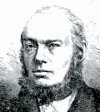 |
|
website called Biographical
Etymology of Marine Organism Names: "His father was a vestry-keeper
in Blendstrup, later in Gjerding. H.C. Lyngbye studied to become a
priest and already when studying theology, he became interested in
botany, particularly algae, and in 1817 he received a prize from the
Univ. of Copenhagen for a survey of the algae of Denmark. After this
he traveled to Norway and the Faeroes collecting algae - also collecting
old songs from the Faeroes about Sigurd Fafnesbane and other figures
in the Nibelungen group, which he translated to Danish - and |
published
in 1819 Tentamen hydrophytologiae Danicae - a classical work
over the algae of Nordic seas. The same year he became a priest in
the place where he grew up (and married the 11 year younger Henriette
Augusta Tilemann in 1822), but moved in 1827 to Zealand, where he
acted as a priest in Söborg and Gilleleje. In 1836 he wrote Rariora
codana - a work classifying algal vegetation phytogeographically,
but this remained unpublished until Eugene Warming in 1879 published
the botanical part of the work."
-
lyon'ii: named for Gregory Smitten Lyon (1913-2004), an American plant collector born in Hillsborough, California. He received a BS degree in economics at the University of California in 1934. He was a student of Prof. H. L. Mason and Prof. Lincoln Constance and made extensive collections in the little-known Inner South Coast Ranges of San Benito, Merced, and Fresno Counties, California. He discovered this unique variant of Streptanthus insignis in 1938 in the course of his many seasons of botanizing this little known sector of the South Coast Ranges. Often with the authors, Arthur Rice Kruckeberg and John Laurence Morrison, Lyon then revisited the localities over the years, providing a faithful record of its occurrences, in good years and bad. He was the second vice-president of the California Botanical Society, 1984-1985. (Corethrogyne californica var. lyonii, Streptanthus insignis ssp. lyonii)
-
lyon'ii: named for William Scrugham Lyon (1851-1916),
an early resident of Los Angeles and California's first state forester.
William Scrugham
Lyon was born at Eastchester, Westchester County, New York, November
29, 1851, the eighth of nine children (six girls and three boys).
His father, Samuel Edward Lyon, was a successful attorney at
White Plains and moved his growing practice to New York City about
1859. According to Sargent's Silva of North America, Lyon studied
forestry and agriculture at the College of the State of New York and
Massachusetts Agricultural College. He is described in an old
voting register as having been 6 feet 2 inches tall with blue eyes
and brown hair. Arriving in California in 1871, he and his brothers
found work in sheep ranching at Rancho Los Alamitos. On November 23,
1875, Lyon married Miss Maria Emelina ("Emma") Mellus. Miss
Mellus, born at Los Angeles March 26, 1857, was the fifth of eight
children. Her uncle, Henry Mellus, had arrived in California
in 1835, and her father Francis (1824-1863), followed in 1839. Both
brothers became wealthy as importers and merchants. Emma's mother,
Adelaida Johnson (1839-1922), came to California in 1833 from Guaymas,
Sonora, with her parents, her grandmother, her uncles (the Guirado
brothers) and their families. About this time, Lyon's brothers
returned to New York. For a while, Lyon farmed 22 acres near
Compton. In 1882 he gave his occupation as "botanist" in
the voting register, while the city directories list him and his brother-in-law
F. C. Mellus as managers of the "Pacific Salt Works", founded
by Frank Mellus on the salt flats at San Pedro in 1862. The
salt works, barely profitable from the start, went under about this
time due to the falling price of imported salt. By 1883, Lyon
was living at 32 Wilmington (now north San Pedro St.) in Los Angeles,
next door to the United Presbyterian Chinese Mission. The mission
had been organized in 1878 by the Rev. Joseph Cook Nevin, who had
developed an interest in botany while running a mission at Canton,
China. In June, 1884, the two men collected together on Catalina
Island and in April, 1885 visited San Clemente Island. Lyon
collected again on Catalina from July to October of that year. His
account of the island flora was published the following year in the Botanical
Gazette as "Flora of Our Southwestern Archipelago." In
an 1887 directory, Lyon is listed as the proprietor of Occidental
Nurseries. In July, 1888 he was appointed head of the State Forestry
Board and held that position until the Board was de-funded in 1893.
He then went back into the nursery business in partnership with
Leuric C. Cobbe, specializing in cacti and succulents. Ernest
Braunton was hired away from Germain's to act as foreman and the eccentric
San Diego naturalist C.R. Orcutt was sent as head of a three-man
team to collect in Mexico. In addition to their local business,
they sold plants for as much as $100 apiece to botanical gardens and
nurseries in Europe. Cobbe left the business about 1894 and Lyon took
on Miss Ethelind Lord as partner, doing business as "Elysian
Gardens" (located at Marathon and Rampart). Lyon's book, Gardening in California, published about 1897, was the first
book on the subject written specifically for our region. In it, Lyon treats not only the traditional
roses, dahlias, etc. but also advises the use of such natives as the
matilija poppy, sticky monkey flower and the "insular form of
the native California wild cherry" which now bears his name.
In 1902, Lyon left for Manila to take charge of seed and plant
introduction for the Philippines Bureau of Agriculture. His position
is also given in some of the bureau's publication as "in charge
of Division of Plant Industry" and "expert in tropical horticulture".
(Mrs. Lyon's name also appears on a list of collectors associated
with the bureau.) After three years, he left the bureau and
went back into the nursery and flower business, specializing this
time in tropical orchids. He died at Manila, July 20, 1916.
His survivors included his widow, a daughter, Katherine (born
in 1878) and a son, Ward (born in 1886). Another daughter, Adelaide,
died of diphtheria in 1888 at the age of 11. (information from David Hollombe) I am also indebted
to Mr. Martin Gaerlan (a resident of Balicbalic, Philippines) for
the following, which is extracted from his Some Brief Notes on
William S. Lyon, former resident of 'Nagtahan Gardens,' Barrio Balicbalic,
Sampaloc, Manila: "Around 1903, William S. Lyon built a beautiful
chalet near an old late 19th century cemetary in the bucolic hills
of Barrio Balicbalic, Sampaloc, Manila. As a horticulturist with the
then Bureau of Agriculture in the Philippines from 1902 to September
16, 1907, he used the vast estate as a sort of experimental nursery
planting various plants and trees. The abundance of various botanical
life eventually earned the place the nickname, "Nagtahan Gardens."
[Note: Nagtahan is a prominent place near the Pasig River just a few
kilometers away from the hills of Balicbalic. Today Naghatan Gardens
is called "Ang Gubat" or "The Forest" as the estate
still contains a number of trees and plants.] In fact, Mr. Lyon corresponded
on one occasion with Oakes Ames, founder of the world famous Ames
Botanical Laboratory, regarding "going over 85 plants of D.
(Dendrobium) lyonii and 34 of D. (Dendrobium) acuminatum"
in his collection in the fields and in the gardens of Naghatan. However,
Mr. Lyon's planting skills goes beyond the hills of Balicbalic. Mr.
Lyon successfully reintroduced, where the Spaniards repeatedly failed,
the avocado or alligator pear ( Persea gratissima) to
the Philippines in 1903. Subsequently, this variety has been renamed
the Lyon avocado in honor of its introducer. Around 1912, in a review
of the status of Philippine agriculture, J. Wester mentions that W.S.
Lyon's most significant contribution to Philippine agriculture was
the introduction of a legume, the Lyon bean ( Mucuna nigricans).
Nevertheless, the list goes on as Mr. Lyon is credited as well with
the introduction of various fruits like the Chinese dwarf banana ( Musella
lasiocarpa), caimito or star apple ( Chrysophyllum cainito), pitanga or Brazilian cherry ( Eugenia uniflora), genip
( Genipa americana), loquat ( Eriobotrya japonica),
bael or Bengal quince ( Aegle marmelos), myrobalan or Malacca
tree ( Phyllanthus emblica), and a superior guava called
yellow or apple guava ( Psidium guajava). Even after resigning
from the Bureau of Agriculture, Mr. Lyon continued to successfully
introduce to the Philippines other fruit plants like the casimiroa
( Casimiroa edulis), cattley guava ( Psidium cattleianum),
cherimoya or custard apple ( Annona cherimola), biriba
( Rollinia orthopetala), and salak ( Salacca edulis).
Aside from fruit trees, there was a time that Mr. Lyon got involved
with experimenting with Japanese silkworms. Around 1905, Mr. Lyon
had written for silkworm eggs from the Japanese Experiment Station
and in anticipation of their arrival had transplanted cuttings from
mulberry trees. Unfortunately, these silkworm experiments did not
succeed due to climatic differences between the Philippines and Japan."
Lyon also published material on tamarinds, sugar cane, cacao, coconuts
and jute. ( Pentachaeta
lyonii, Phacelia lyonii, Prunus
ilicifolia ssp. lyonii, Senecio lyonii)
-
Lyonotham'nus: literally Lyon's shrub,
named for William Scrubham Lyon (see previous entry) and from thamnus, "shrub." The genus Lyonothamnus was published in 1885 by Asa Gray.
-
Lyrocar'pa: from the Greek lyra, "a
lyre," and karpos, "fruit," referring to the
fruit shape. The genus Lyrocarpa was published by William Jackson Hooker and William Henry Harvey in 1845.
-
Lysichi'ton: from the Greek lysis, "a loosening or releasing,"
and chiton, "a tunic, cloak or covering," and alluding
to the spathe-like bract which partially encloses the inflorescence.
The genus Lysichiton was published by Heinrich Wilhelm Schott in 1857.
-
Lysimach'ia: named for Lysimachus (c.360bce-281bce), a Macedonian general and one of the successors of Alexander the Great, subsequently King of Thrace, or
from the Greek lysimachos, "ending strife," from lysis, "a loosening, releasing," and mache,
"strife," from whence came the English name of loosestrife, which the
Jepson Manual gives as the common name for this genus (in addition
to Lythrum). Lysimachus was according to Pliny the first one to discover that the plant now known as loosestrife had a calming effect on oxen (see Lythrum below). A website of the Eloise Butler Wildflower Garden says "The genus name Lysimachia is from the Greek for either King Lysimachus or from lysis meaning "a release from" and mache for "strife". The legend is that Lysimachus, King of Sicily, was walking through a field. A bull chased him. He grabbed a loosestrife plant, waved it in front of the bull and it calmed the bull." Thus he was "loosed" from "strife." The genus Lysimachia was published by Carl Linnaeus in 1753.
-
Lyth'rum: from the Greek lythron meaning
"blood," and alluding to the color of the flowers or to
the reputed styptic qualities (tending to contract or bind, tending to check
bleeding) of some species. One source I found says "the Greek word lythrum also means ‘gore’ in the sense of blood flowing from battle wounds and other causes.This may refer to the plant's ability to stop bleeding." Regarding the name 'loosestrife,' this same source (Seedaholic.com) says "The curious name ‘Loosestrife’ is apparently translated from the Greek and means something like 'that which placed on the yoke of quarrelsome oxen will calm them down.' They thought that garlands of the herb hung around the necks of oxen would encourage a team to plough a field in harmony. The veracity of this is a little hard to put to the test these days." The idea was that the plants were supposedly repellant to gnats and fleas and thus lessened the irritation of those insects to oxen under plough. The genus Lythrum was published by Carl Linnaeus in 1753.
|

